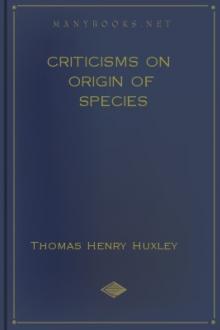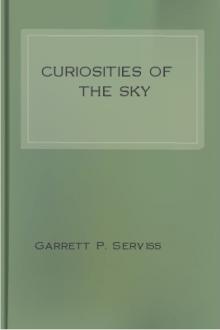Genre Science. Page - 3

f uraei and cartouches
107. Wall-scene from temple of Denderah
108. Obelisk of Heliopolis, Twelfth Dynasty
109. Obelisk of Begig, Twelfth Dynasty
110. "Table of offerings" from Karnak
111. Limestone altar from Menshîyeh
112. Wooden naos, in Turin Museum
113. A mastaba
114. False door in mastaba
115. Plan of forecourt, mastaba of Kaäpir
116. Plan of forecourt, mastaba of Neferhotep
117. Door in mastaba façade
118. Portico and door of mastaba
119. Plan of chapel, mastaba of Khabiûsokari
120. Plan of chapel, mastaba of Ti
121. Plan of chapel, mastaba of Shepsesptah
122. Plan of chapel, mastaba of Affi
123. Plan of chapel, mastaba of Thenti
124. Plan of chapel, mastaba of Red Scribe
125. Plan of chapel, mastaba of Ptahhotep
126. Stela in mastaba of Merrûka
127. Wall-scene from mastaba of Ptahhotep
128. Wall-scene from mastaba of Ûrkhûû
129. Wall-scene from mastaba of Ptahhotep
130. Plan of serdab in mastaba at Gizeh
131. Plan of serdab and

all the parts of thewatch to the function, or purpose, of showing the time, is held to beevidence that the watch was specially contrived to that end; on theground, that the only cause we know of, competent to produce such aneffect as a watch which shall keep time, is a contriving intelligenceadapting the means directly to that end.
Suppose, however, that any one had been able to show that the watch hadnot been made directly by any person, but that it was the result ofthe modification of another watch which kept time but poorly; and thatthis again had proceeded from a structure which could hardly be calleda watch at all--seeing that it had no figures on the dial and the handswere rudimentary; and that going back and back in time we came at lastto a revolving barrel as the earliest traceable rudiment of the wholefabric. And imagine that it had been possible to show that all thesechanges had resulted, first, from a tendency of the structure to varyindefinitely; and secondly, from something in

S. Monthly Notices_, 1900.
[2] _R. A. S. Monthly Notices_, Sup.; 1905.
[Illustration: CHALDÆAN BAKED BRICK OR TABLET, Obverse and reversesides, Containing record of solar eclipse, 1062 B.C., used lately byCowell for rendering the lunar theory more accurate than was possibleby finest modern observations. (British Museum collection,No. 35908.)]
[3] _R. A. S. Monthly Notices_, vol. x., p. 65.
[4] R. S. E. Proc., vol. x., 1880.
2. ANCIENT ASTRONOMY--THE CHINESE AND CHALDÆANS.
The last section must have made clear the difficulties the way ofassigning to the ancient nations their proper place in the developmentof primitive notions about astronomy. The fact that some allegedobservations date back to a period before the Chinese had invented theart of writing leads immediately to the question how far tradition canbe trusted.
Our first detailed knowledge was gathered in the far East bytravellers, and by the Jesuit priests, and was published in theeighteenth century. The As

ena under varied circumstances, and endeavour to deduce the laws of their relations. Every natural phenomenon is, to our minds, the result of an infinitely complex system of conditions. What we set ourselves to do is to unravel these conditions, and by viewing the phenomenon in a way which is in itself partial and imperfect, to piece out its features one by one, beginning with that which strikes us first, and thus gradually learning how to look at the whole phenomenon so as to obtain a continually greater degree of clearness and distinctness. In this process, the feature which presents itself most forcibly to the untrained inquirer may not be that which is considered most fundamental by the experienced man of science; for the success of any physical investigation depends on the judicious selection of what is to be observed as of primary importance, combined with a voluntary abstraction of the mind from those features which, however attractive they appear, we are not yet sufficiently advanced in science to inv

aphs, particularly those of the singular regionaround the star Rho Ophiuchi. Here are to be seen somber lanes andpatches, apparently forming a connected system which covers an immensespace, and which their discoverer thinks may constitute a ``darknebula.'' This seems at first a startling suggestion; but, after all,why should their not be dark nebulæ as well as visible ones? In truth,it has troubled some astronomers to explain the luminosity of thebright nebulæ, since it is not to be supposed that matter in sodiffuse a state can be incandescent through heat, and phosphorescentlight is in itself a mystery. The supposition is also in accord withwhat we know of the existence of dark solid bodies in space. Manybright stars are accompanied by obscure companions, sometimes asmassive as themselves; the planets are non-luminous; the same is trueof meteors before they plunge into the atmosphere and become heated byfriction; and many plausible reasons have been found for believingthat space contains as ma

out it. It is not the best looking thing, but the bestacting thing, which is the most advantageous to us. This good-lookingcandle is a bad burning one. There will be a guttering round about itbecause of the irregularity of the stream of air and the badness of thecup which is formed thereby. You may see some pretty examples (and I trustyou will notice these instances) of the action of the ascending currentwhen you have A little gutter run down the side of a candle, making itthicker there than it is elsewhere. As the candle goes on burning, thatkeeps its place and forms a little pillar sticking up by the side,because, as it rises higher above the rest of the wax or fuel, the airgets better round it, and it is more cooled and better able to resist theaction of the heat at a little distance. Now, the greatest mistakes andfaults with regard to candles, as in many other things, often bring withthem instruction which we should not receive if they had not occurred. Wecome here to be philosophers; and I

ation ofgeneral ideas or principles. In the familiar definition ofHerbert Spencer, science is organized knowledge.
Now it is patent enough, at first glance, that the veriest savagemust have been an observer of the phenomena of nature. But it maynot be so obvious that he must also have been a classifier of hisobservations--an organizer of knowledge. Yet the more we considerthe case, the more clear it will become that the two methods aretoo closely linked together to be dissevered. To observe outsidephenomena is not more inherent in the nature of the mind than todraw inferences from these phenomena. A deer passing through theforest scents the ground and detects a certain odor. A sequenceof ideas is generated in the mind of the deer. Nothing in thedeer's experience can produce that odor but a wolf; therefore thescientific inference is drawn that wolves have passed that way.But it is a part of the deer's scientific knowledge, based onprevious experience, individual and racial; that wolves areda

ut onemonth; in winter, when about three months old, on pleasant days, beingkept in, the sun and out of the wind.
What are the best hours for airing out of doors?
In summer and early autumn a child may be out almost any time betweenseven in the morning and sunset; in winter and early spring, a youngchild only between 10 or 11 A.M. and 3 P.M., although this dependssomewhat upon the climate. In New York and along the Atlantic coastthe early mornings are apt to be damp and the afternoons raw andcloudy.
On what kind of days should a baby not go out?
In sharp winds, when the ground is covered with melting snow, and whenit is extremely cold. A child under four months old should not usuallygo out if the thermometer is below freezing point; nor one under eightmonths old if it is below 20° F.
_What are the most important things to be attended to when the childis out in its carriage?_
To see that the wind never blows in its face, that its feet areproperly covered and warm

s," he said. "The same thing we talked about last month. But why were we tipped off in advance?"
"It's one more piece in the pattern," I said. "If the tip's on the level, then they're stepping up the program."
Within three days, reports began to pour in--from Peru, Cuba, Mexico, Turkey, and other parts of the world. Then on March 9 a gleaming metallic disk was sighted over Dayton, Ohio. Observers at Vandalia Airport phoned Wright-Patterson Field. Scores of Air Force pilots and groundmen watched the disk, as fighters raced up in pursuit. The mysterious object streaked vertically skyward, hovered for a while miles above the earth, and then disappeared. A secret report was rushed to the Civil Aeronautics Authority in Washington, then turned over to Air Force Intelligence.
Soon after this Dr. Craig Hunter, director of a medical supply firm, reported a huge elliptical saucer flying at a low altitude in Pennsylvania. He described it as metallic, with a slotted outer rim and a rotating ring just

year 1777, you informed me of the great success you had met with in curing dropsies by means of the fol. Digitalis, which you then considered as a more certain diuretic than any you had ever tried. Some time afterwards, Mr. Russel, surgeon, of Worcester, having heard of the success which had attended some cases in which you had given it, requested me to obtain for him any information you might be inclined to communicate respecting its use. In consequence of this application, you wrote to me in the following terms.[3]
[Footnote 3: See the extract from this letter at page 5.]
In a letter which I received from you in London, dated September 29, 1778, you write as follows:--"I wish it was as easy to write upon the Digitalis--I despair of pleasing myself or instructing others, in a subject so difficult. It is much easier to write upon a disease than upon a remedy. The former is in the hands of nature, and a faithful observer, with an eye of tolerable judgment, cannot fail to delineate a like